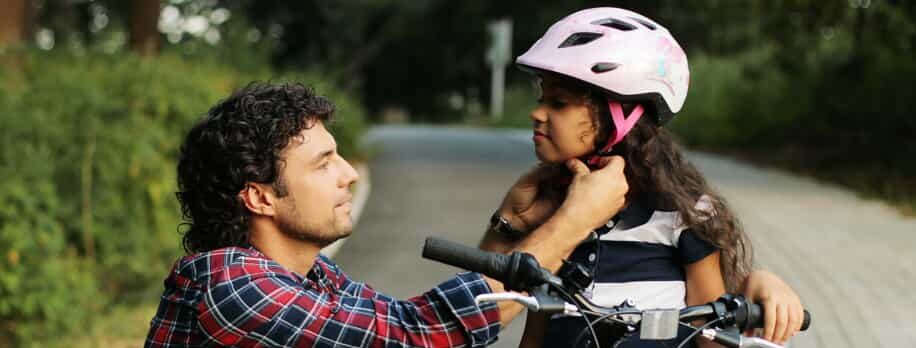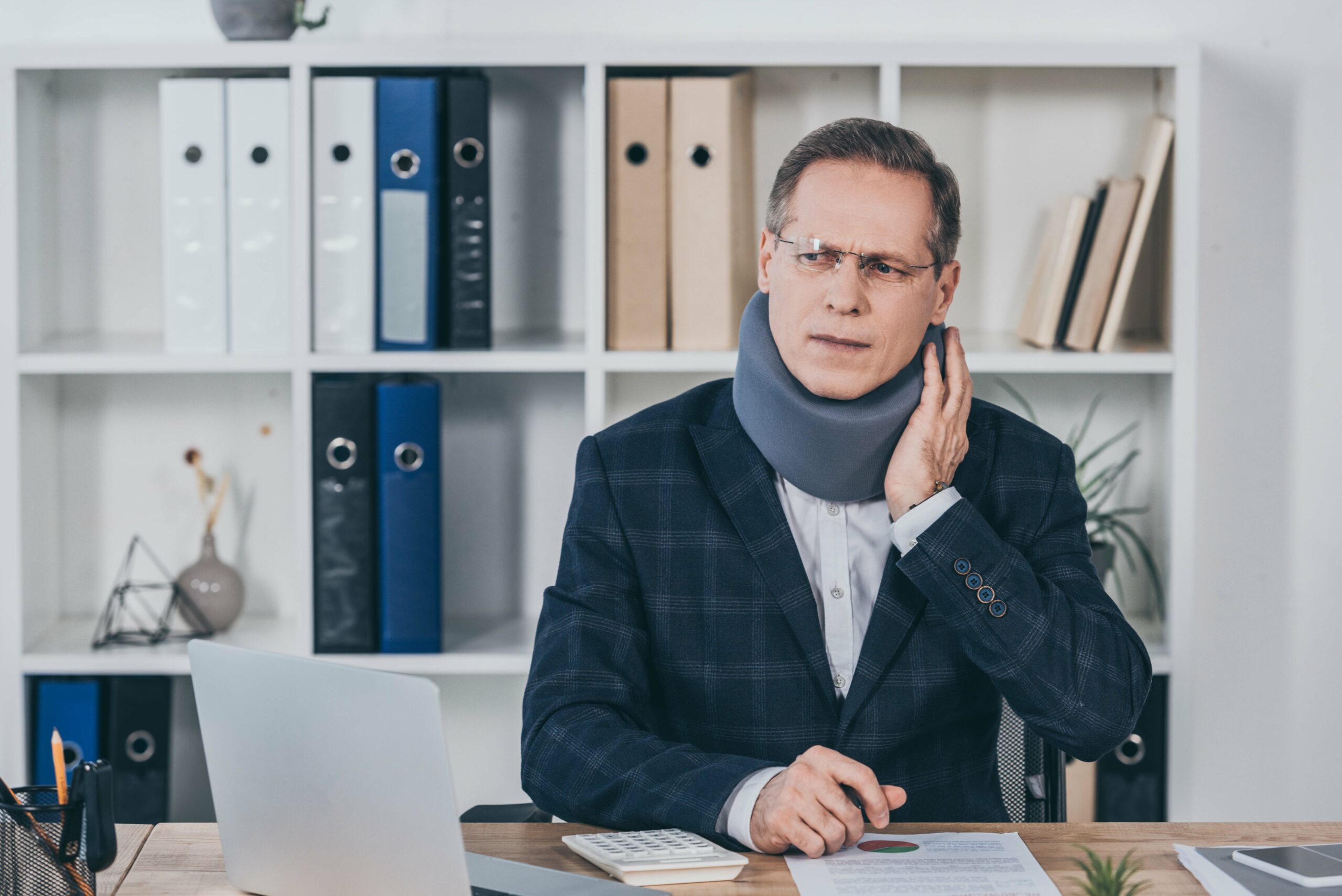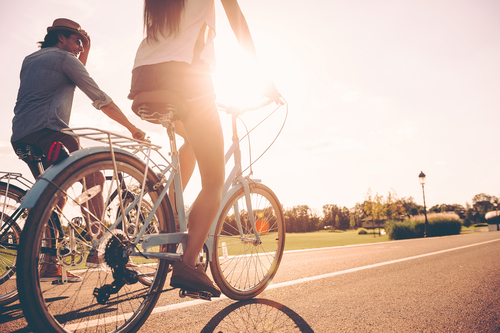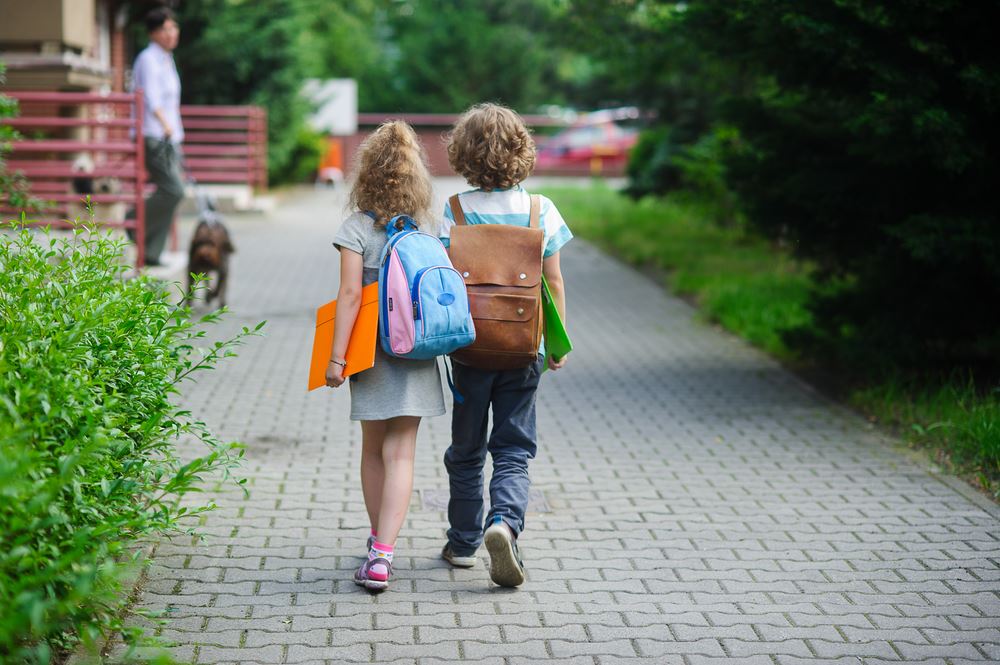
School is out and summer is officially here! That means it’s time for beach outings, swimming pools, bike rides, playground visits, vacations, outdoor adventures, and more! The summer months are typically more laid back, which isn’t necessarily a good thing when it comes to safety. Injuries among children increase dramatically in the months of May–August and because of this, medical professionals refer to the summer months as “Trauma Season.” When children are out of school and the days are longer, there is more time to be outdoors and be more active – increasing the chances for injuries. Thankfully most of the injuries that occur during the summer are preventable.
Whether you are taking a trip with your family or staying close to home for the summer, here are five safety tips to keep in mind to help ensure everyone’s summer memories are good ones.
1. Pedestrian Safety
No matter the age of your child or grandchild, it is always a good idea to remind them to stay safe while walking or playing near a roadway.
- Walk on a sidewalk when possible. If there is not a sidewalk, walk AGAINST traffic.
- If walking at dusk or after the sun sets, wear bright or reflective colors. Carrying a flashlight or a clip-on light is always a good idea to make yourself or your child more visible.
- Make eye contact with a driver before crossing in front of a vehicle. Never assume that the driver sees you.
- Look left, right, and then left again before crossing the street.
- Cross the street at a marked crosswalk if possible.
2. Bike Safety
Riding a bike is a great way to get around to visit friends in the summer or to get to a nearby playground. Every year about 250,000 children are injured from a bicycle-related accidents. Here are a few of the most important safety reminders before your child hits the road on their bike, scooter, or skateboard. For additional tips for bike safety, check out our top 10 bicycle safety tips here.
- Ensure that your child’s helmet fits properly. Never buy a helmet that your child will “grow into.”
- Ride WITH traffic and follow the same road rules you would in a car. Teach kids to stop at stop signs and look before proceeding through an intersection, even if it’s in a residential neighborhood.
- Use hand signals to communicate direction changes.
- Avoid busy roadways if possible.
- Avoid riding at dusk or night.
3. Water Safety
Spending time at the pool or beach is a great way to pass the time on a hot summer day. While water can provide a great source of entertainment and exercise, it can also be deadly when safety precautions are not taken. Drowning can happen in seconds and is the leading cause of death among preventable injuries for kids ages 1-4.
- Always keep an eye on your children. Ensure that an adult that can swim well is watching and that you are no farther than arm’s length from toddlers who cannot swim.
- Get lessons for kids who are unable to swim. Many community centers offer lessons for a reasonable price.
- Teach children that swimming at a beach is much different than at a pool. There are varying depths, surfaces, currents, and possible undertows.
- If you have a backyard swimming pool, install a four-sided fence that is equipped with a child-proof lock.
- Knowing the signs of drowning is also important. Many are surprised to learn that splashing, yelling, and flailing arms are not typically seen when someone is experiencing active drowning.
4. Car Safety
From ensuring your child is safe during a car trip to educating your child that a vehicle is not a place to play, safety inside vehicles is always a topic to keep in the forefront of the mind.
- Ensure that you have the proper child safety seat for your child’s age and size as well as it is properly installed. Every 25 seconds, a child under the age of 14 is involved in a crash. Having the proper safety seat and insuring it is installed correctly can lower the risk of severe injuries.
- Heatstroke is the leading cause of non-crash, vehicle-related deaths for children. The inside of a vehicle can heat up 19 degrees in just 10 minutes and on hot days, this can happen even more quickly. Teach kids that cars and trunks are NOT safe places to play. In the case of accidents, always ensure that your child knows how to unlock doors or use the emergency trunk release.
- NEVER leave your child in a car, not even for a minute.
5. Playground safety
The Centers for Disease Control reported that every year emergency rooms treat more than 200,000 children ages 14 and under for playground-related injuries. Be sure to keep these safety tips in mind during your family’s next trip to the playground.
- Ensure the playground equipment is appropriate for your child’s age.
- Supervise your child at all times.
- Make sure that your child is wearing closed-toe shoes to prevent falls and injuries to their feet.
- Remind kids to go down the slide one at a time, always sit forward facing, and keep their legs in front of them.
- Ensure that the playground has a protective surface installed surrounding the equipment.
Was your child injured?
At Huffman & Huffman, your family matters and these safety tips are meant to help you protect your children and grandchildren. There is nothing worse than watching your child suffer from a painful, traumatic injury, especially when that injury occurred due to another person’s negligent actions. If you believe that this is the case for your child, turn to Huffman & Huffman for help pursuing the compensation that your family deserves.
Our experienced personal injury attorneys have been assisting those injured across Virginia since 1973. We are family-owned, and you have our word that we will do everything in our power to help your family.
Contact our team at (757) 599-6050 to schedule your free consultation at your earliest convenience. You can call or chat with us 24 hours a day, seven days a week. We have offices in Newport News and Virginia Beach and serve clients in Hampton Roads and all over Virginia.
 Text Us
Text Us  Call Us
Call Us 







